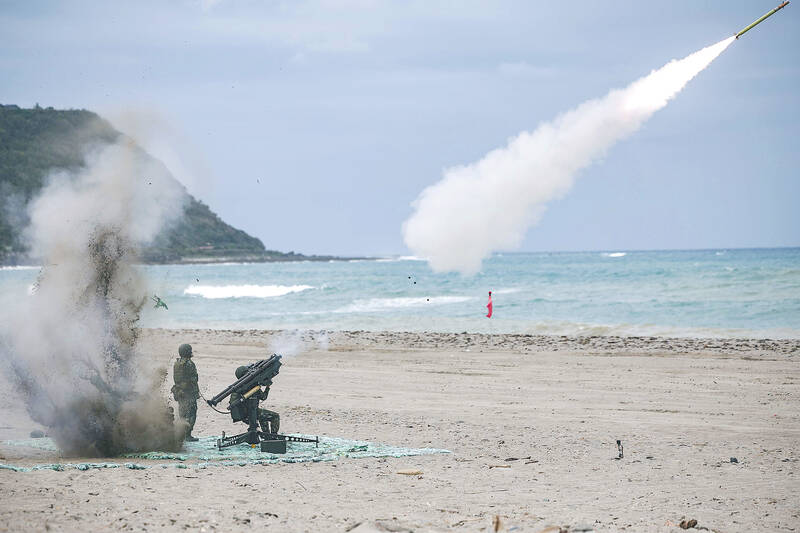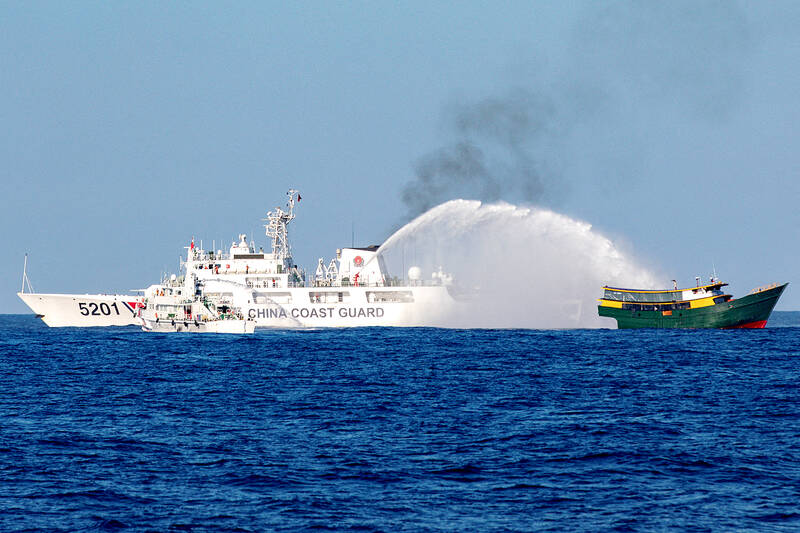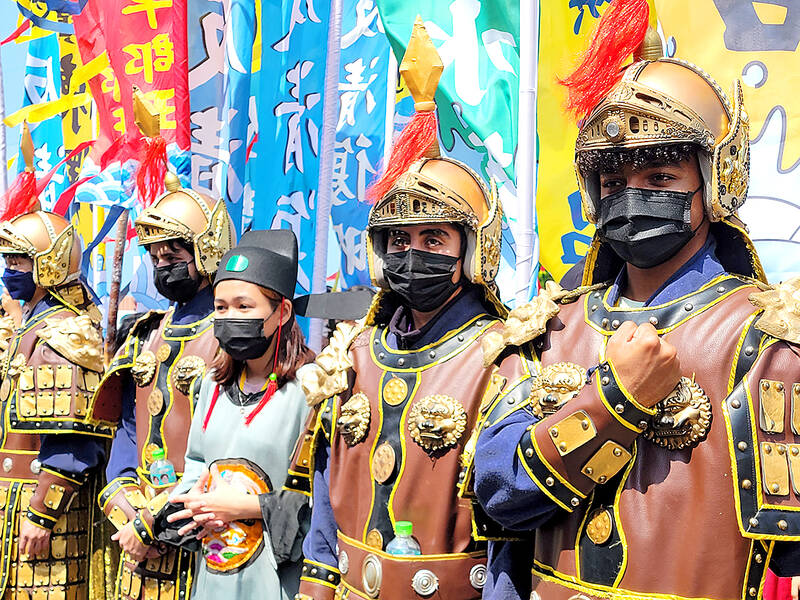In late October of 1873 the government of Japan decided against sending a military expedition to Korea to force that nation to open trade relations. Across the government supporters of the expedition resigned immediately. The spectacle of revolt by disaffected samurai began to loom over Japanese politics. In January of 1874 disaffected samurai attacked a senior minister in Tokyo. A month later, a group of pro-Korea expedition and anti-foreign elements from Saga prefecture in Kyushu revolted, driven in part by high food prices stemming from poor harvests. Their leader, according to Edward Drea’s classic Japan’s Imperial Army, was a samurai who felt that Japan’s expansion onto the Asian continent would help complete the restoration of the emperor and unify the nation. Two days later, the Council of State began to move on the punitive expedition later that year against the Taiwanese indigenous people who had murdered the sailors from Okinawa in 1871.
Although in Taiwan-centered presentations, the 1874 expedition is typically presented as Japan solidifying its claim to Okinawa, according to Drea, the Council’s main motive “was to deflect samurai energy and frustration.” The army used troops drawn from southern Kyushu to remove them from areas of regional revolt, and then paired them with loyal troops from northern Kyushu to ensure that the potential rebels followed orders. Ironically, the decision not to attack Korea had resulted in a decision to attack Taiwan.
On that expedition was Kishida Ginko, Japan’s first war reporter. A thinker ahead of his time, Ginko had developed a vision of Japan that saw it not only as an importer of “advanced civilization” from abroad, but as an exporter of it to the areas to its south. Matthew Fraleigh, who chronicled Ginko in a superb 2010 paper, connected him to the US envoy to Japan, Charles Le Gendre, who had been advising Tokyo to grab Taiwan. Fraleigh observes of Ginko’s dispatches from the front in Taiwan: “Ginko’s News From Taiwan served as one of the major vehicles through which the expansionist proposals of LeGendre, and the imperialistic discourse upon which they were based, found their way into the public sphere.”

Photo: AP
Ginko would live until 1905, long enough to see Japan grab Taiwan from the Manchu empire, and his early thinking would live on in the strategic problem that confronted Japanese planners with the acquisition of Taiwan: was Taiwan the southernmost extension of the empire? Was it to be the southern anchor of an empire that was to expand on the Asian mainland? Or was it a springboard to further acquisitions to the south? As history was to show, Japan attempted to answer these questions with a “Yes.”
‘SOUTHERN ADVANCE FEVER’
The geographical implications of Taiwan were realized as soon as Taiwan entered the globalized colonial and trading system in the 17th century. In 1662, after Koxinga (Cheng Cheng-kung, 鄭成功) evicted the Dutch from Taiwan, he turned his attention south. He raided towns in the Philippines, and sent an envoy to Manila to demand tribute or else he would send a fleet. The Spanish, fearing Koxinga’s military strength, withdrew their forces from the southern Philippines where the Muslims were in revolt to defend Manila, and abandoned their attempt to colonize the Moluccas. Because Koxinga was Chinese, there were calls for killing all non-Christian Chinese, and eventually the situation broke down after the local Spanish governor demanded all Chinese assemble at a certain place, and a massacre of local Chinese resulted. But the idea of a southward-pointing, Chinese-mediated connection between Taiwan and Philippines was recognized. We can only speculate what would have happened had Koxinga not died later in 1662.

Photo: Reuters
As Seiji Shirane has chronicled in Imperial Gateway, a masterful discussion of how Japan used Taiwan and Taiwanese as a stepping stone into both south China and Southeast Asia, the connection between Taiwanese, Chinese and points south was recognized immediately by Taiwan’s Japanese overlords.
“Japanese colonial leaders contended that Taiwan’s location, experience, and human resources provided an advantage over Japan’s metropole to infiltrate Southeast Asia and its markets,” Shirane observes. This linkage became especially powerful when “southern advance fever” overcame Japan during World War One, he says. Shirane writes of a police official who in 1918 wrote an editorial in the Taiwan Times arguing that Taiwanese could be used to form links to Chinese businesses and networks in Southeast Asia, given the latter’s origin in Fujian and Guangdong. Later that year, the same official contended in another editorial that Japan should allow overseas Chinese in Southeast Asia to obtain Japanese nationality. The British were already giving local Chinese British nationality in their colonies, he argued.
This magic power of Taiwan was attributed not only to the Taiwanese but to the Japanese themselves. Shirane cites Taiwan civil affairs chief Uchida Kakichi (in Taiwan 1910-1915), who observed that Japanese who had been successful in business and administration in Taiwan were more likely to find success elsewhere in Southeast Asia. In partnership with a Japanese rubber tycoon, Uchida founded the South Seas Association to promote public interest in Asia beyond Taiwan. It was initially housed in the Tokyo office of the Taiwan Government-General’s office, and had branches in Singapore, Taipei and elsewhere in Southeast Asia.

Photo: Wang Shu-Hsiu, Taipei Times
HISTORY WILL ECHO
The discourse on Taiwan, fostered in part by propaganda emanating from Beijing and too often dutifully followed by international media organizations, relates Taiwan to China. Sometimes apologists for expansionism by the People’s Republic of China (PRC) argue that whenever outside powers have acquired Taiwan, they immediately aim it at China. That is actually true of Japan.
But another interpretation of Taiwan’s geographic beckoning is suggested by history. If Korea is “a dagger pointed at the heart of Japan,” as a German military advisor in Japan observed in the late 19th century, where does Taiwan point? The Hengchun Peninsula (恆春) at the tip of the island is a finger that points governments that control Taiwan further south. Japan also teaches that lesson.
The exception to this is the Manchus, who never moved beyond Taiwan. It seems the Manchu failure to move south was the twin product of the overall weakness of the 19th century Manchu state, and its local weakness in Taiwan — the Manchus were never able to extend their rule over the whole of Taiwan and the unprogressive, extractive Manchu government was the target of constant revolts.
That south-pointing history of Taiwan should be remembered whenever Taiwan’s future under PRC occupation is discussed. History is not going to stop. It will continue, and like all history, it will echo what has gone on before.
Where will that finger point for Beijing?
Notes from Central Taiwan is a column written by long-term resident Michael Turton, who provides incisive commentary informed by three decades of living in and writing about his adoptive country. The views expressed here are his own.

Feb. 17 to Feb. 23 “Japanese city is bombed,” screamed the banner in bold capital letters spanning the front page of the US daily New Castle News on Feb. 24, 1938. This was big news across the globe, as Japan had not been bombarded since Western forces attacked Shimonoseki in 1864. “Numerous Japanese citizens were killed and injured today when eight Chinese planes bombed Taihoku, capital of Formosa, and other nearby cities in the first Chinese air raid anywhere in the Japanese empire,” the subhead clarified. The target was the Matsuyama Airfield (today’s Songshan Airport in Taipei), which

China has begun recruiting for a planetary defense force after risk assessments determined that an asteroid could conceivably hit Earth in 2032. Job ads posted online by China’s State Administration of Science, Technology and Industry for National Defence (SASTIND) this week, sought young loyal graduates focused on aerospace engineering, international cooperation and asteroid detection. The recruitment drive comes amid increasing focus on an asteroid with a low — but growing — likelihood of hitting earth in seven years. The 2024 YR4 asteroid is at the top of the European and US space agencies’ risk lists, and last week analysts increased their probability

On Jan. 17, Beijing announced that it would allow residents of Shanghai and Fujian Province to visit Taiwan. The two sides are still working out the details. President William Lai (賴清德) has been promoting cross-strait tourism, perhaps to soften the People’s Republic of China’s (PRC) attitudes, perhaps as a sop to international and local opinion leaders. Likely the latter, since many observers understand that the twin drivers of cross-strait tourism — the belief that Chinese tourists will bring money into Taiwan, and the belief that tourism will create better relations — are both false. CHINESE TOURISM PIPE DREAM Back in July

Could Taiwan’s democracy be at risk? There is a lot of apocalyptic commentary right now suggesting that this is the case, but it is always a conspiracy by the other guys — our side is firmly on the side of protecting democracy and always has been, unlike them! The situation is nowhere near that bleak — yet. The concern is that the power struggle between the opposition Chinese Nationalist Party (KMT) and their now effectively pan-blue allies the Taiwan People’s Party (TPP) and the ruling Democratic Progressive Party (DPP) intensifies to the point where democratic functions start to break down. Both